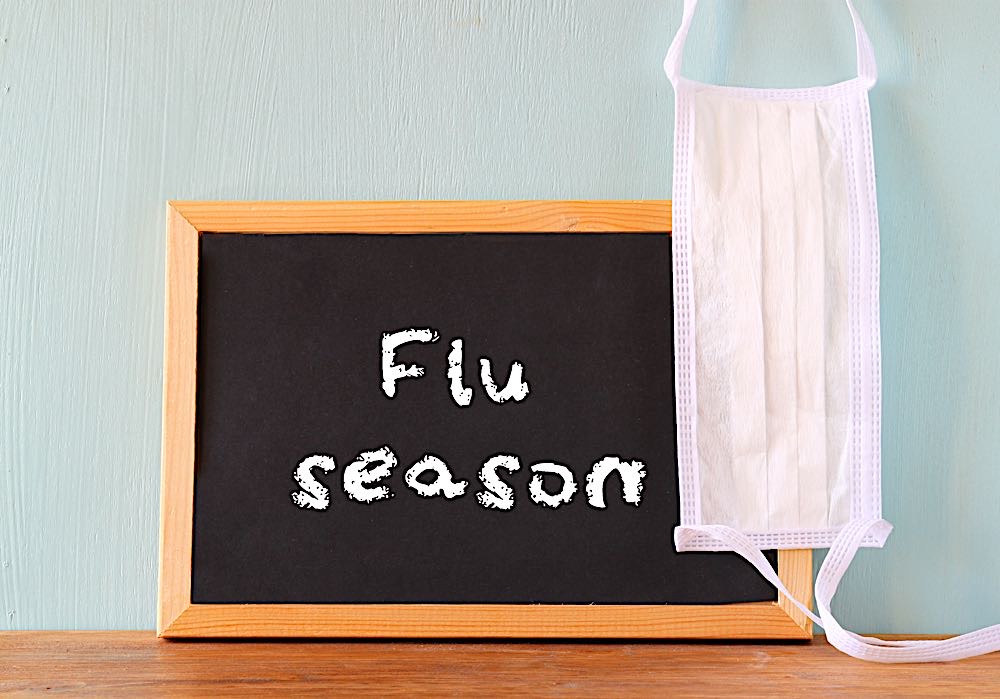
How Can Employers Help Employees Remain Healthy This Flu/Covid/Cold Season?
As the cold, flu, and COVID-19 seasons loom, creating a healthier work environment is paramount to ensure the well-being of employees and the continuity of business operations. Employers play a crucial role in fostering a safe and healthy workspace. By implementing proactive measures, companies can significantly reduce the risk of illness spread, ensuring a healthier and more productive workforce[1].
This feature outlines several actionable strategies employers can adopt to promote health and safety during these challenging times.

Remote Work and Flexible Scheduling
Amid the continuing concerns about health and safety, the role of remote work has come to the fore. Employers can harness the benefits of remote working to minimize the exposure risk to infectious diseases.
By allowing employees to work from home, especially those feeling under the weather or exhibiting symptoms, organizations can greatly reduce the chances of infectious disease spread within the premises.
Moreover, offering a flexible schedule can be a supportive gesture for employees who need to visit healthcare providers or attend to ailing family members. This not only demonstrates a caring work culture but also contributes to preserving public health. A flexible scheduling system can also cater to the diverse needs of the workforce, including those with childcare responsibilities or other caregiving roles.
This flexibility can be structured in various ways, such as staggered working hours, compressed workweeks, or personalized work schedules that suit the individual circumstances of employees. Through these measures, companies can maintain productivity while ensuring the well-being of their staff.

Promoting Vaccination
Vaccination is a robust defense mechanism against severe illnesses like influenza and COVID-19. By facilitating vaccination campaigns within the workspace, employers can provide easy access to vaccines, thus promoting a healthier workforce. Hosting immunization clinics or arranging for mobile vaccination units are practical steps towards this goal.
Employers can also extend information on local vaccination centers and might consider covering the cost of vaccinations as an incentive for higher participation rates. By promoting vaccination, employers contribute to creating a herd immunity, which is instrumental in controlling the spread of infectious diseases.

Maintaining a Clean and Sanitary Workplace
A well-sanitized workplace is a fundamental step in curbing the spread of infections. Regular cleaning schedules, especially focusing on high-touch surfaces and common areas, are imperative. Employers could invest in professional cleaning services that adhere to the recommended sanitation standards.
The availability of hand sanitizers, disinfecting wipes, and encouraging a culture of regular hand washing can significantly lower the risk of germ transmission. Employers might also consider upgrading facilities with touchless amenities, like automatic faucets and doors, to further reduce contact points.

Encouraging Sick Leave
Clear and supportive sick leave policies are crucial in encouraging employees to stay home when they are unwell. The fear of repercussions often leads to presenteeism, which is detrimental to the individual and their co-workers.
It’s essential for employers to communicate the sick leave policies effectively and ensure that the process of availing sick leave is straightforward and non-penalizing. Moreover, promoting a culture that prioritizes health over attendance will reinforce the importance of staying home when sick, ultimately benefiting the overall health of the organization.

Planning for Coverage
Planning for coverage during the cold and flu season is a pragmatic approach to ensure smooth operations. By having contingency plans in place, employers can quickly adapt to the absence of staff due to illness.
Establishing good relationships with HR Management teams, Recruiting companies and staffing agencies — such as Pivotal Solitions — can be a lifesaver in quickly filling positions with temporary workers when needed.
Cross-training employees on different roles will also provide a buffer, allowing for flexibility in managing workloads during staff shortages.

Health and Wellness Education
Health education is pivotal in empowering employees to take proactive steps towards maintaining their health. Employers can organize regular educational sessions, workshops, or webinars on preventive measures, proper hygiene practices, and other health-related topics.
Distributing informational materials, whether digitally or in print, can serve as handy references for employees. Topics could range from recognizing the symptoms of common illnesses, the importance of vaccinations, to maintaining a balanced diet and regular exercise routine, which are all crucial for overall well-being and immune system functionality.
Creating a Supportive Environment
A supportive environment is where employees feel comfortable discussing their health concerns without fear of stigmatization or reprisal. Employers should foster an open communication culture where employees can voice their health concerns and seek support. Training managers to respond empathetically to employees’ health issues is crucial in building trust and promoting a culture of care and understanding.
This supportive environment should extend to mental health as well, with employers providing resources and support for stress management, anxiety, and other mental health issues. Establishing employee assistance programs or providing access to counseling services can be instrumental in supporting the mental well-being of the workforce.

Regular Communication on Health Policies
Transparent and regular communication on health policies and guidelines is vital to ensure that all employees are well-informed and aligned with the organization’s health and safety protocols.
Employers can utilize various communication channels such as emails, internal communication platforms, and meetings to share updates on health policies, preventive measures, and any changes in work arrangements due to the flu or COVID-19 seasons.
Clear communication helps in setting the right expectations and ensuring that employees are aware of the resources and support available to them.
Monitoring and Adapting Policies
The situation regarding the flu, cold, and COVID-19 is continually evolving, requiring employers to stay vigilant and ready to adapt their health policies accordingly.
Regular monitoring of local health advisories, government guidelines, and maintaining a feedback loop with employees can help employers stay updated on the situation and make informed decisions.
Adaptability in policies and work arrangements will demonstrate a proactive approach to safeguarding employee health and ensuring business continuity in the face of health crises.
Encouraging Overall Wellness
Promoting overall wellness among employees goes beyond addressing immediate health concerns. Employers can offer wellness programs encompassing physical, mental, and financial wellness.
Engaging wellness experts for on-site or virtual workshops, providing access to fitness facilities or subscriptions, and offering financial wellness seminars are some initiatives employers can consider.
By fostering a holistic wellness culture, employers not only contribute to better health outcomes but also improve morale, engagement, and productivity in the workplace.
Leveraging Technology
Technology can be a powerful ally in promoting health and safety in the workplace. Employers can employ virtual meeting tools to reduce in-person interactions, use health screening apps to monitor employees’ health, and leverage data analytics to identify potential health risks and areas of improvement.
Moreover, technology can facilitate easier access to health education resources, virtual health consultations, and wellness programs. Implementing tech-driven solutions can enhance the effectiveness of health and safety measures, making the workplace a safer and healthier environment for all.
Final Thoughts
The health and well-being of employees is a top priority for any organization. As the flu, cold, and COVID-19 seasons approach, employers have a significant role in implementing proactive measures to promote a healthy work environment.
By adopting a holistic and flexible approach, employers can significantly contribute to reducing the risk of illness spread, ensuring the safety and well-being of their workforce, and maintaining operational continuity during these challenging times.
Contact Pivotal Solutions any time if you have HR questions, or need recruits to fill in for sick team members and other HR needs.
mini contact
Sources:
[1] Addition information and sources>>


 Our HR solutions experts can recommend the right mix of HR outsourced services to make your entry into Canada easier.
Our HR solutions experts can recommend the right mix of HR outsourced services to make your entry into Canada easier.  Pivotal Employment Management Services co-hires your workforce, simplifying entry of your business in Canada.
Pivotal Employment Management Services co-hires your workforce, simplifying entry of your business in Canada. 















